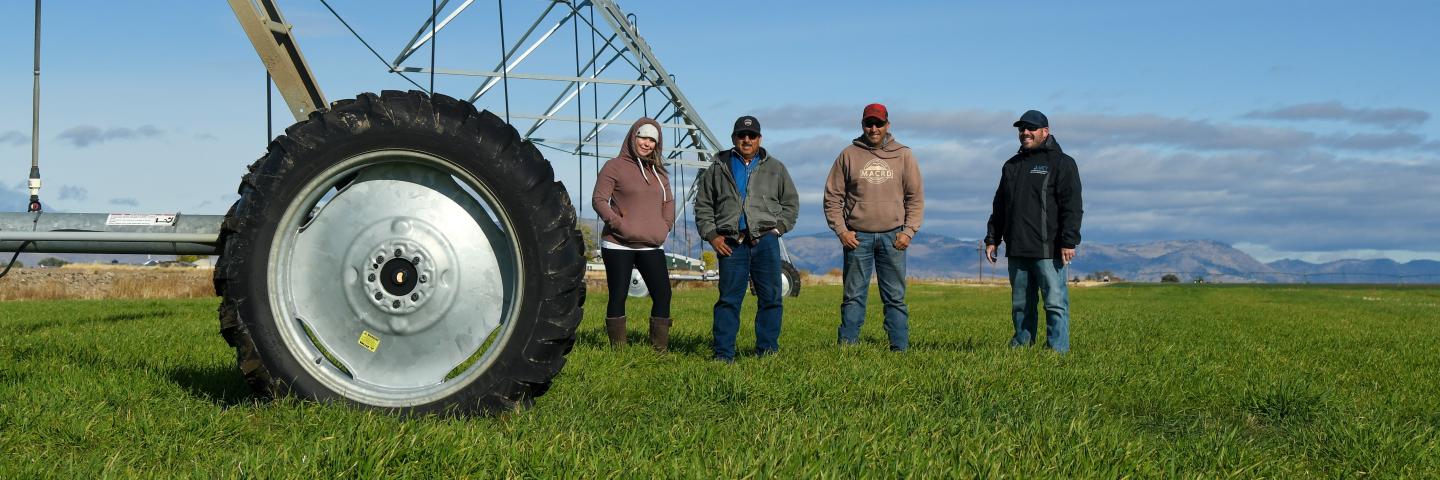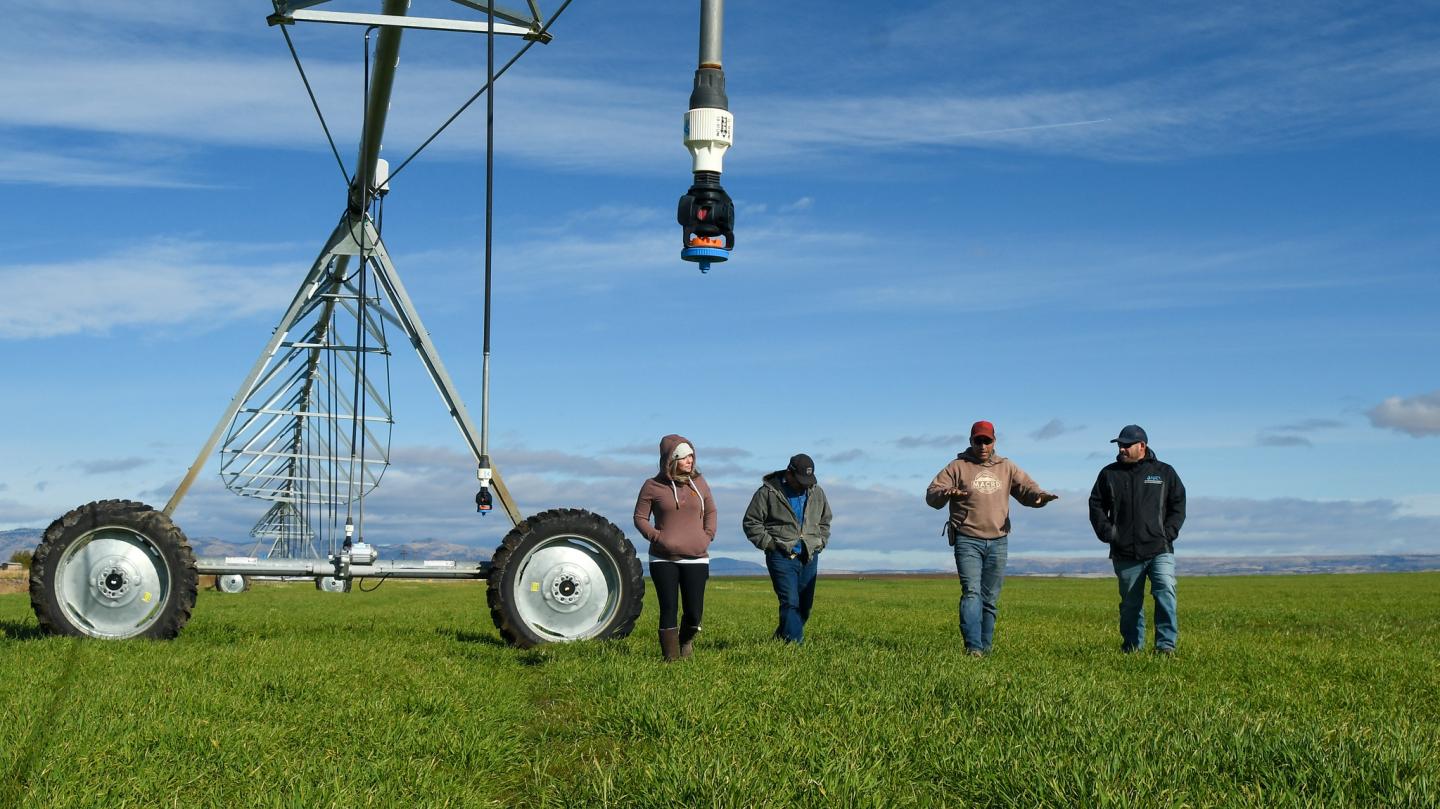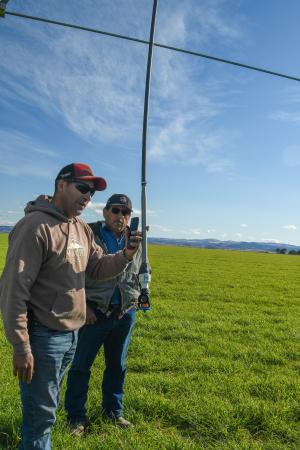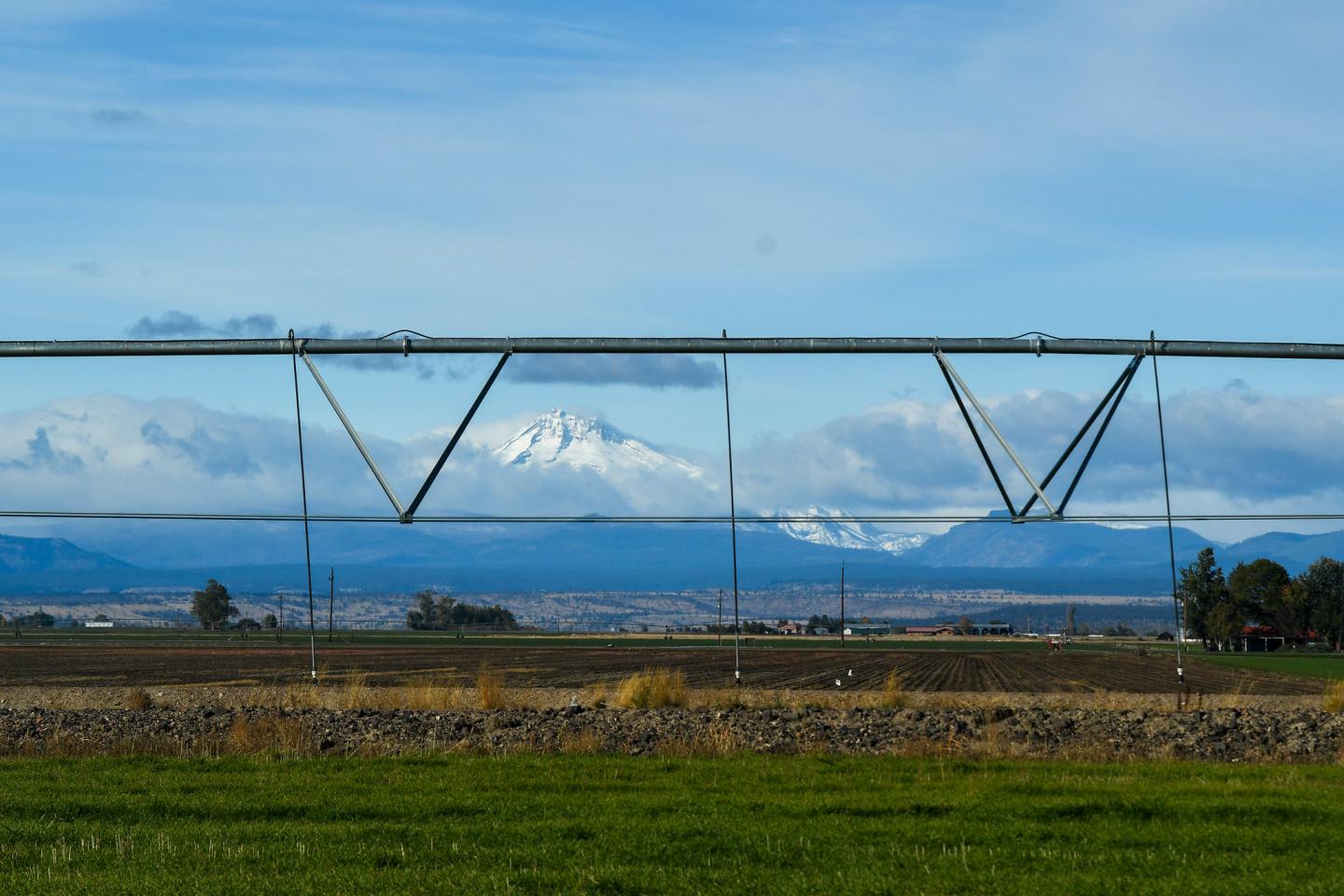Improving Irrigation on the Garcia Farm

Jamie Garcia, Janey Garcia, and Fidel Cruz worked with Jenn Eatwell and Lars Santana to improve irrigation on their farm through the Environmental Quality Incentives Program (EQIP).
Water is an essential resource when it comes to farming. For Oregon farms east of the Cascade Mountain Range, where rain is infrequent during the growing season and the threat of drought is very real, agricultural operations are becoming more efficient and resilient.
On the Garcia Farm, located near Madras, Oregon, farmers Jamie Garcia, Janey Garcia, and Jamie's father Fidel Cruz are striving to improve their irrigation systems, conserve water, and increase productivity on their operation. Upon hearing about conservation programs available through NRCS Oregon from local work group meetings and neighbors, the Garcias reached out for support.

The Garcias connected with Jenn Eatwell, NRCS Soil Conservationist, and Lars Santana, NRCS District Conservationist, who worked together to develop a conservation plan for the farm to access technical and financial assistance through the Environmental Quality Incentives Program (EQIP).
Each NRCS conservation plan is individually tailored to the operation and the landowner's goals. The plan provides a solid foundation to strategically meet the needs of the Garcias while addressing resource concerns in the local area.
Their priority from the start was water conservation. “If we don’t have any water, we are out of business,” said Jamie Garcia.
Working with NRCS Oregon, they decided it was time to leave flood irrigation behind and modernize irrigation operations on the farm with pivot sprinklers. Center pivot nozzles are now lower to the ground, decreasing water lost to evaporation.

The modernized irrigation system also allows for the Garcias to control the speed and output of water with an app on their cell phones. Their main crops - grain crops, grass seed, and alfalfa - all have different water needs. The app allows for each crop to be watered at different times and quantities. Being able to control the irrigation with the touch of a button allows peace of mind for the Garcias.
After improving their water operations, the next component of their conservation plan focused on soil health practices. “The irrigation sprinkler system is one piece, but there’s a whole other management side of it - the water management, and the crop rotations, and using more drought resilient crops, along with no-till drills, reducing soil disturbance," explained Lars Santana.
The family decided to transition to no-till management in some areas of the farm. No-till farming lowers soil disturbances which in turn can improve water infiltration into the ground and increase the organic matter in the soil.
“No-till is a very good tool, and we are in the process of changing a lot of acres to no-till. With some crops you have to move dirt, but some crops we can plant no-till,” said Garcia.
Their fields of wheat, barley, grass seed, and alfalfa are all planted using a no-till drill. The no-till drill cuts through plant residue in the field opening a small furrow in the soil placing the seed at the correct depth and then presses the soil back in place. This ensures minimal soil disturbance when planting seeds.
“Previously you’d see dust everywhere from plowing… and now there is no soil loss from no-till,” Garcia said.
Another soil loss prevention method they implemented was cover crops. Cover crops are usually planted after a field is harvested to provide soil benefits while the field is fallow before the next growing season’s crop is planted.
Cover crops reintroduce nutrients into the soil while their roots help loosen the soil, reduce erosion, and the need for tilling. They can also help increase soil moisture by providing surface residue, increasing root channels and water infiltration, and sequestering carbon from the atmosphere.
Improving crop health was a multi-layered approach on the Garcia Farm. Crop rotation and planting drought resilient crops helped achieve their goal. Having a crop rotation plan allows for the soil nutrients to be replenished season after season.
Cruz mentioned on their farm they “plant Kentucky bluegrass (seed) behind alfalfa and it’s working really well.” The grass crop can use the nitrogen left in the soil from the nitrogen-fixing bacteria that have a symbiotic relationship with the alfalfa legume crop.

NRCS Oregon is there to help producers improve soil health, conserve water, and increase resilience in the face of an ever-changing climate.
“We are excited to keep working with [NRCS] and I know it’s a benefit for the ground to use the water right,” said Garcia. “The NRCS customer service and the communication is so great. They come when they say they’ll come, they show up and it makes a lot of difference for everyone.”


